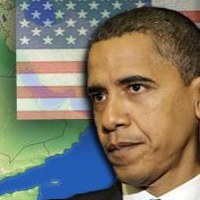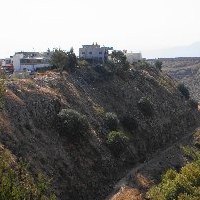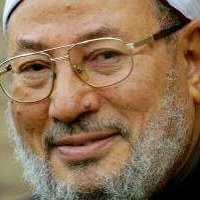![]()
RubinReports | By Barry Rubin
As we set out down Ibn Gvirol Street to the Herzliya Gymnasia high school, all the stores were closing. The police cordoned off the street to vehicles and, as on Yom Kippur, hundreds of people strolled down the middle of the pavement. Past the city hall, where a concert was starting up, we walked and then past the small memorial of restless stones that marks the place where Prime Minister Yitzhak Rabin was assassinated.
That night in November 1995, I’d come home from the peace rally that had turned into a mass of mourners when the news spread that Rabin had been murdered a few meters away. I walked, crying, into the small room, then a family room and now our office where I’m writing this. Our daughter sat on my wife’s lap.
Now our daughter is 17 years old, playing a leading role in her school’s Holocaust Martyrs’ and Heroes’ Remembrance Day commemoration program. In the school’s courtyard, plastic chairs have been set down tightly, arm to arm, for about 1000 people. All of them are full. The front two rows are reserved for the school’s graduates who now are in the army and the parents of those former students who have fallen.
At precisely 8:00 PM, with an un-Israeli sense of discipline, everyone rose at the same moment as the sirens went off. Those are the same sirens as the ones I heard signaling incoming Iraqi missiles almost a quarter-century earlier. A flag is slowly lowered to half-mast. The father of one slain soldier-graduate says the Kaddish; a cantor chants the al-Rahamim prayer, modified for the occasion but rooted in the prayer for those martyred a thousand years ago in Europe by the pogroms accompanying the Crusades.
These are the parts of the program repeated every year. It is possible that such things would grow stale and routine. But they don’t. They are simply — literally — too close to home; too fresh in the mind and raw in the emotions. For all of those students will have to serve, too. And every citizen — not just every soldier — is a potential target.
Yet it is what comes next that is most harrowing. Four students, including our daughter, recite — as photos and details flash on two large screens — the names of each of those martyrs and heroes. One by one they march before us. And the list goes and photos go on and on, for longer than I had expected.
The first of the dead is from 1915; the overwhelming majority, it seems, are from the War of Independence, when about one percent of the Jewish population died. A number of them died on October 6, 1973 and in the following couple of days, in the Sinai at the start of the Yom Kippur war.
Some were civilians; others soldiers. Most male; a few female. Only one is well known, the writer Yosef Hayim Brenner who taught at the school, murdered by an Arab mob in 1921.
At the very end are the names of five people who were killed in the 1948 war, given a special emphasis as they hade each been the last survivor of a family wiped out in the Holocaust.
They are frozen with the haircuts and clothes of their time, mostly smiling, happy students or young soldiers. Loved by their family and friends, they were regular people, never intending to be martyrs and certainly not heroes. They were deprived of life but we were deprived of their presence and their achievements.
And suddenly I remembered something I hadn’t thought about for years. A dignified professor told me long ago about a conversation he had once had, probably in the 1960s, with a cabinet minister who had been one of the pillars of the governments of Prime Minister David Ben-Gurion, Israel’s founding father.
The powerful politician began talking about the Holocaust and how, deep down, he could not really believe that all of those people had died. For many years, he believed, they were somewhere out there and one day there would magically appear off the coast a vast fleet of ships. They would land amidst rejoicing at the reunions that would take place.
He had to believe that, he continued, for without such an expectation, without all of those people and their talents how could anyone believe that the Israel could be founded and survive and prosper at all? How would it be possible that a people so wounded, so bereft, could survive and be fruitful at all?
And as he originally told this story, the political leader had become deeply emotional and moved. And as the professor recounted the story to me, he had become deeply emotional and moved. And as I heard the story I, too, had become deeply emotional and moved.
“Then He said unto me: ‘Son of man, these bones are the whole house of Israel; behold, they say: Our bones are dried up, and our hope is lost; we are clean cut off.”
Now, I watched as these many more people did briefly seem to walk before me.
“So I prophesied as He commanded me, and the breath came into them, and they lived, and stood up upon their feet….”
And I had only to look around me to know that they had not — a cliché but here a truth — died in vain.
“Behold, I will take the children of Israel from among the nations, whither they are gone, and will gather them on every side, and bring them into their own land; and I will make them one nation in the land.”
But I have not invited you to read these words this day just to say this. There is something equally or even more remarkable to tell.
In all of this and throughout the nation on this day, there was not a word of hatred, of reviling any enemy. No smugness of triumph, no desire for conquest; no thirst for revenge or punishment. Thus behaves the world’s most slandered nation.
Barry Rubin is director of the Global Research in International Affairs (GLORIA) Center and editor of the Middle East Review of International Affairs (MERIA) Journal. His book, “Israel: An Introduction“, has just been published by Yale University Press. Other recent books include “The Israel-Arab Reader” (seventh edition), “The Long War for Freedom: The Arab Struggle for Democracy in the Middle East” (Wiley), and “The Truth About Syria” (Palgrave-Macmillan). The website of the GLORIA Center and of his blog, Rubin Reports. His original articles are published at PJMedia.



 RSS
RSS











Latest Comments
Hello Mike, Thank you for your positive feedback to the article. I felt there wasn’t too much critical analysis of ...
Thanks for this considered and well constructed article. A follow up article on the manner in which the editorial contro...
THE CLUELESSNESS OF CLAIMING THAT OBAMA'S MIDDLE EAST POLICIES WERE A FAILURE CANNOT BE FURTHER FROM THE TRUTH, WHAT THE...
As long as Obama is the president of the usa do not trust the us government......
Thank you for an good read....